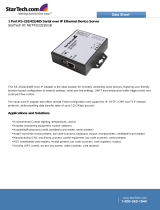
TRAKKER Antares 246X Stationary Terminal User’s Manual
nugget
d39
xiv
Warnings and Cautions
The warnings and cautions in this manual use the following format.
Warning
A warning alerts you of an operating procedure, practice, condition, or statement
that must be strictly observed to avoid death or serious injury to the persons working
on the equipment.
Avertissement
Un avertissement vous avertit d’une procédure de fonctionnement, d’une méthode,
d’un état ou d’un rapport qui doit être strictement respecté pour éviter l’occurrence
de mort ou de blessures graves aux personnes manupulant l’équipement.
Caution
A caution alerts you to an operating procedure, practice, condition, or statement that
must be strictly observed to prevent equipment damage or destruction, or corruption
or loss of data.
Conseil
Une précaution vous avertit d’une procédure de fonctionnement, d’une méthode,
d’un état ou d’un rapport qui doit être strictement respecté pour empêcher
l’endommagement ou la destruction de l’équipement, ou l’altération ou la perte de
données.
Notes:
Notes are statements that either provide extra information about a topic or
contain special instructions for handling a particular condition or set of circumstances.
About This Manual
This manual contains all of the information necessary to install, configure, and operate
the TRAKKER
®
Antares
™
2460 and 2461 stationary terminals.
This manual was written for two audiences:
•
All users who need to know how to use the terminal to collect data.
•
MIS personnel, operations personnel, analysts, and programmers who need to know
how to install, configure, test, and use the terminal to operate in a network. You
should have a good knowledge of your company’s network and data collection
software. You should be familiar with data communications and network protocols.





















